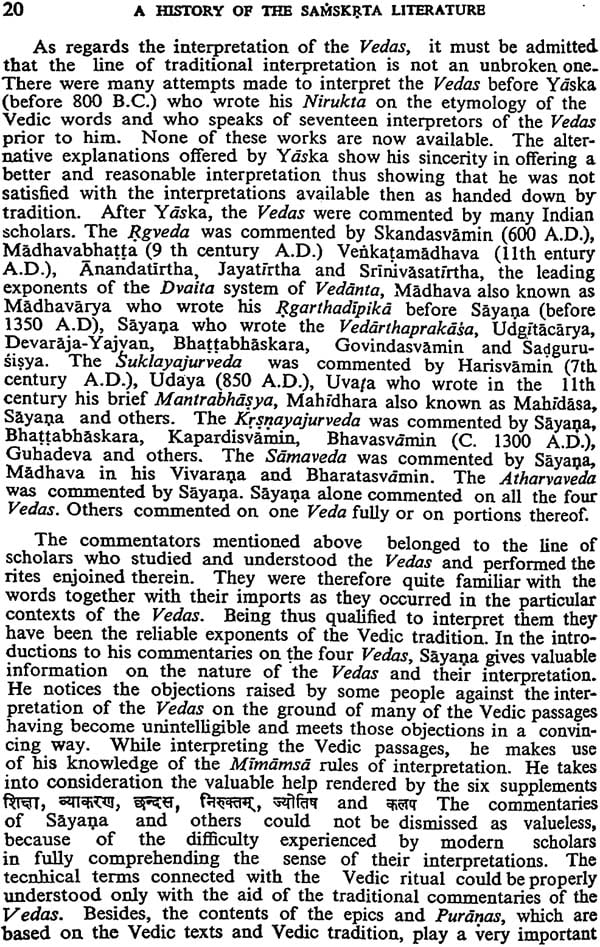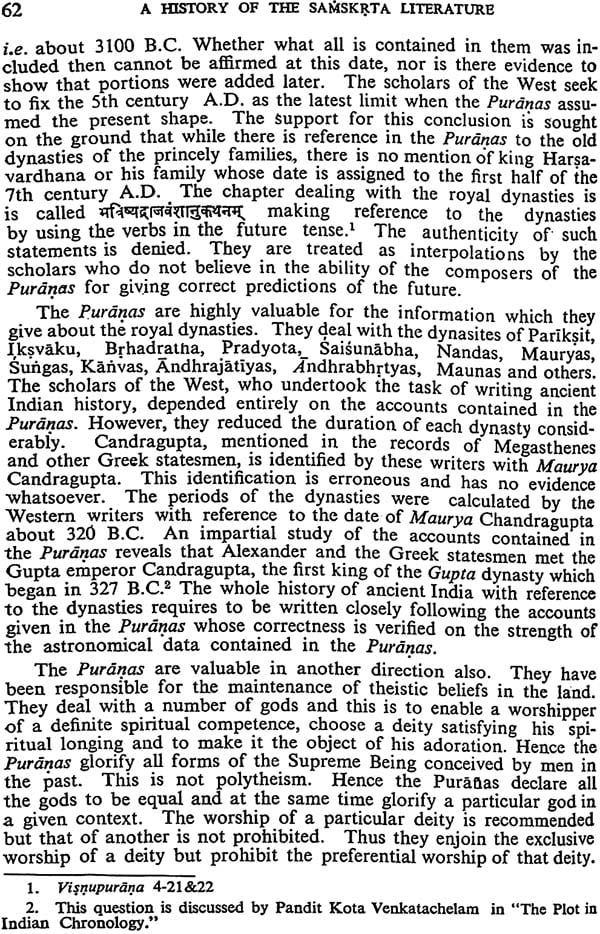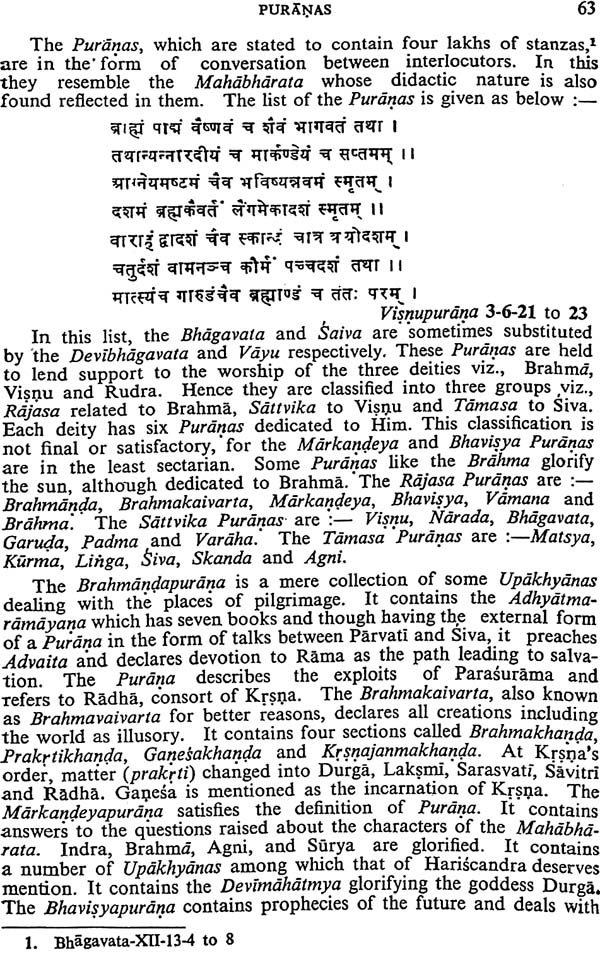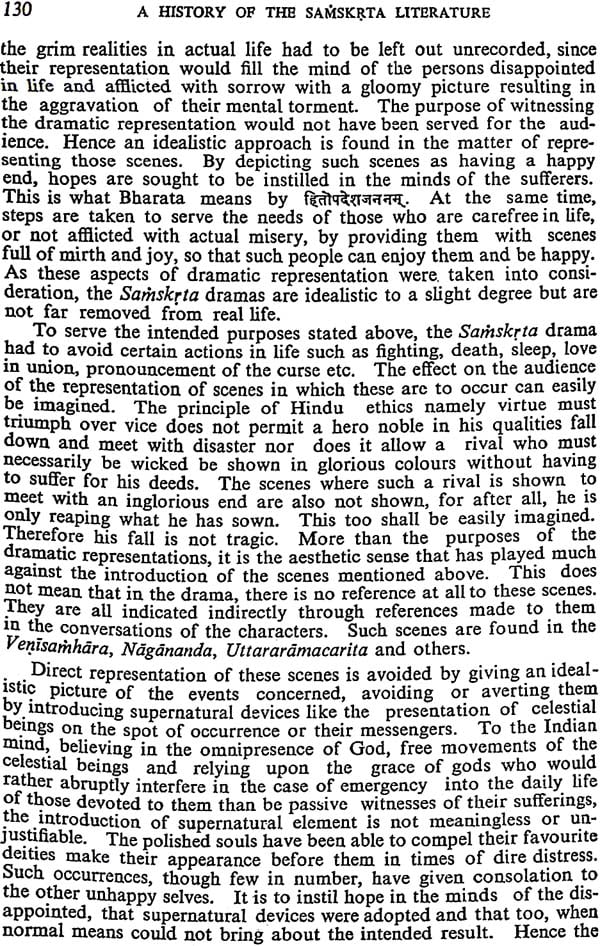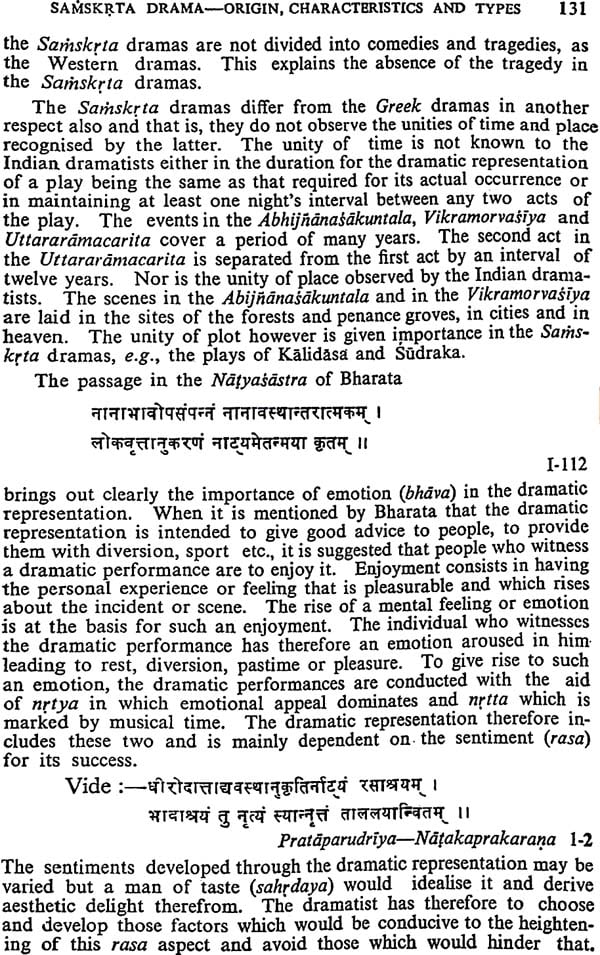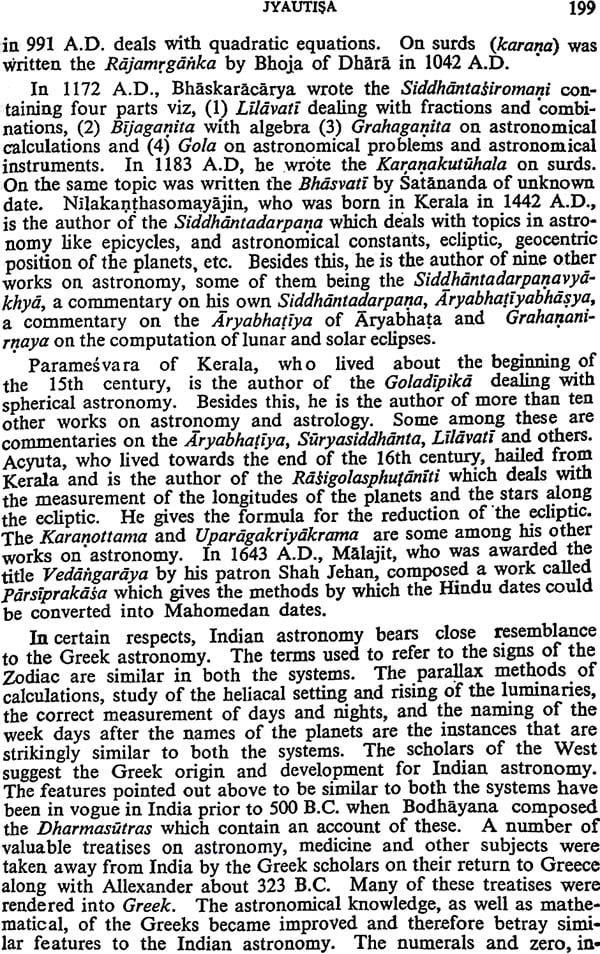
A History of The Samskrta Literature
Book Specification
| Item Code: | NAO506 |
| Author: | Dr. V. Varadachari |
| Publisher: | The Samskrita Academy, Chennai |
| Language: | English |
| Edition: | 2014 |
| Pages: | 302 |
| Cover: | Paperback |
| Other Details | 8.5 inch X 5.5 inch |
| Weight | 340 gm |
Book Description
"Whatever sphere of the human mind you may select for your special study, whether it be language or religion or mythology or philosophy, whether it be laws or customs, primitive art or primitive science everywhere you have to go to India, whether you like it or not because some of the most valuable and most instructive materials with history of man are treasured up in India and in India only"; observed F.A. Maxmuller. He further had stated that "Not knowing what those who came before him, had done for him, he would probably care little to do anything for those who are to come after him". The significance of these statements are not only valid during his times (19th century) but after him and in future too. In this respect the importance of study of Sanskrit literature cannot be over emphasised.
The bulk of literature in Sanskrit being ancient and classical, religious and social, it has acquired different layers of meaning, adopted as they are through successive ages. Hence a study of these texts, requires not a mere passing through or glancing them but repeated studies to get at their meanings.
Such a study also requires a knowledge of the different genres of literature and a chronology of these texts too. The need for such a codification is felt already and Vacaspati Mira in the 9th C.C.E had done it for Nyayasastra. In Muktikopanisad, we find the Upanisads getting listed. But a more systematic study of such chronology is a characteristic feature of study of Sanskrit in modern age, with the advent of western education.
These studies of foreign scholars presented the results of individual studies and researches and the lack of presentation of opinions of Indian scholars of yore was keenly felt. For example, Anandavardhana has his own take on the textual criticism of Rarnayana and Mahabharata and introduced the concept of prabandharasa to have a holistic approach. But due to shifting emphasis in the studies, this approach was not developed further by Indian scholars of yore. But, still the available views and opinions of these scholars definitely needed compilation and presentation.
At this juncture, came the much expected history of the Samskrta literature from the pen of Sri V.Varadachari, acquainted with French and German too. He presented a very thorough study of Sanskrit literature in all its genres. His knowledge of Vedas and Agamas acquired in a traditional way and the knowledge of modern works and ideas directly from the sources, made him fully competent to undertake this task. Yet he presented his work in a small compass, not developing into a very voluminous one or multiple volumes. The author himself revised his first edition and brought out the second edition, to suit the needs of the students of Indian universities, "omitting contents of works familiar to readers", to make it more convenient both in substance and structure. Fie noted with gratitude that he had made use of valuable information contained in the various research journals, thus remarking that his work is upto date.
This work will be useful for students, even in this age, to have a comprehensive view of historical settings and information about Sanskrit literature. Hence the Sanskrit Academy felt the need to bring out this work in co-operation with Pt. V.Krishnamacharya Trust. The Academy is thankful to Pandit V.Krishnamacharya Trust for providing financial assistance.
Sri B. Madhavan, the past President of the Academy expressed his desire to get it reprinted in one of his meetings in Vivekananda College. We, in the Academy are happy that we are able to bring out this work for the benefit of the discerning public and avid students.
Contents
| Preface | ||
| Preface to Third Edition | ||
| Contents | ||
| I | Introductory | 1 |
| II | Vedas | 9 |
| III | Vedas as interpreted by the Orientalists | 11 |
| IV | A Criticism of the Orientalists' view about the Vedas | 17 |
| V | Samhita, Brahmana and Aranyaka portions of the Vedas | 23 |
| VI | Upanisad | 27 |
| VII | Vedangas | 30 |
| VIII | Epics-Ramayana | 35 |
| IX | Mahabharata. | 47 |
| X | Puranas | 60 |
| XI | Pre-Kalidasa Kavya period | 67 |
| XII | Kalidasa | 69 |
| XIII | Post-Kalidasa Kavyas | 76 |
| XIV | Lyrics | 92 |
| XV | Gnomic and Didactic Poetry | 99 |
| XVI | Anthology | 103 |
| XVII | Prose | 105 |
| XVIII | Campu | 114 |
| XIX | Popular fable | 123 |
| XXI | Samskrta drama, origin, characterestics and types | 127 |
| XXII | Bhasa and Kalidasa | 137 |
| XXIII | Post-Kalidasan Dramatists | 148 |
| XXIV | History | 166 |
| XXV | Theories of Poetry and Drama | 170 |
| XXVI | Scientific literature | 183 |
| XXVII | Prosody and Lexicography | 192 |
| XXVIII | Jyautisa | 195 |
| XXIX | Dharmasastra | 201 |
| XXX | Upavedas-Ayurveda, Gandharveda, Dhanuveda, Arthasastra and Ancillary Sciences | 204 |
| XXXI | Philosophy and Religion -General Principles | 216 |
| XXXII | Nastika Systems | 219 |
| XXXIII | Astika Systems- Nyaya, Vaisesika, Sankhya and Yoga | 226 |
| XXXIV | Astika Systems -Mimamsa | 233 |
| XXXV | Astika and Religious Systems-Vedanta | 237 |
| XXXVI | Conclusion | 253 |
